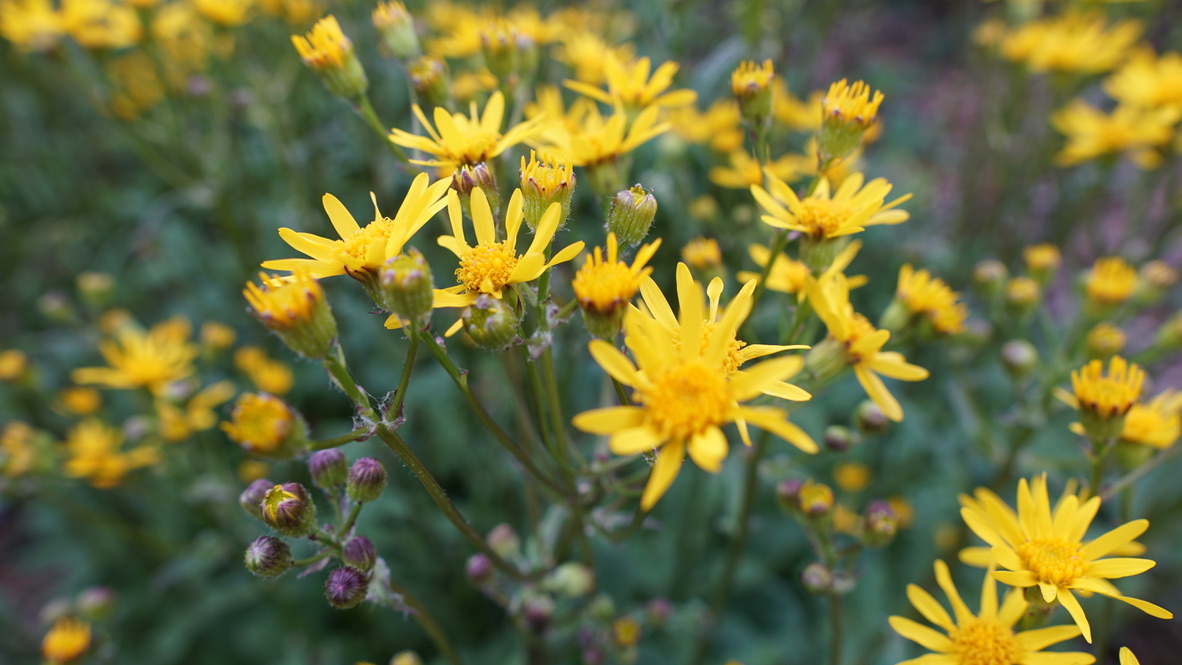Exploring Yellow Streamers
Scientifically recognized as Senecio aureus and classified under Asteraceae, stands out as a distinctive Herbaceous perennial known for its unique characteristics. While it may also be found under other Synonyms, Senecio flaccidus.withN/A form. You can use our free plant care app PlantPlants to identify Yellow Streamers.
Temperature
30 F to 100 F
Watering
Moderate. Water when the top inch of soil is dry
Fertilizing
Balanced N-P-K fertilizer
Sunlight
Full sun to partial shade
Toxicity
Mildly toxic if ingested in large quantities



Appearance and Growth Of Yellow Streamers
At maturity, this species reaches approximately 1-2 feet tall, presenting Narrow, lanceolate leaves with a wavy margin along with Bright yellow, daisy-like flowers in clusters, followed by Small, grayish seeds with a tuft of hair for wind dispersal. These features are supported by a reliable Fibrous root system, ensuring stability and sustained growth.
Yellow Streamers Origin and Habitat
Native to Native to North America, Yellow Streamers thrives in Wet meadows, stream banks, and disturbed areas at elevations around 0-3000 feet. Best suited for USDA Hardiness Zone 3-8. Whether grown indoor, in a curated garden or a more natural setting, its ecological requirements help maintain its vigor over time.



How to take Care of Yellow Streamers
Light, Soil and Watering Yellow Streamers.
You can use our free plant identify app PlantPlants to chose the best spot for Yellow Streamers, This plant prefers Full sun to partial shade and flourishes in Loamy to sandy soil, well-draining with a soil pH of about 6.0 to 7.5.
Yellow Streamers needs watering,Moderate. Water when the top inch of soil is dry, guided by PlantPlants app, You can get plants daily watering schedule. to maintain Moist, but well-drained soil, ensure steady hydration. Applying water through Drip irrigation or thorough soaking supports even distribution and helps prevent overwatering or dryness.
Temperature and Humidity
Yellow Streamers performs best within 50 F to 85 F. Its ideal growth occurs at around 60 F to 75 F, though it tolerates ranges from 30 F to 100 F. Additionally, maintaining Moderate to high humidity encourages healthy foliage and overall plant vigor.
Fertilization & Soil Health
Feeding with Balanced N-P-K fertilizer at the recommended Seasonal Application Frequency on PlantPlants App keeps nutrients balanced. Incorporating Compost or well-rotted manure enhances soil structure and fertility, while staying alert to Yellowing leaves or poor growth helps you adjust care as needed to maintain optimal plant health.
Routine and Maintenance
Regular attention ensures this plant’s beauty and longevity. Late winter or early spring for Cut back old growth to encourage new growth tidies its appearance, while Every 2-3 years may be necessary as it grows, requiring a Increase pot size by 1-2 inches increase and a fresh Well-draining potting mix with organic matter. for Staking or Support. Typically does not require staking.
Seasonal Changes and Propagation of Yellow Streamers
During Winter months, growth may slow and some Leaves may die back in winter but new growth appears in spring can occur. For those looking to propagate, consider Seed propagation and division and provide Sow seeds in spring at 70 F, keep soil moist when starting from seed. If using cuttings, follow Take cuttings in spring; root in a moist potting mix to ensure successful rooting and healthy new plants.
Pests, Diseases and Prevention
our free plant identify and care app PlantPlants can help you diagnosisYellow Streamers problems.Though generally robust, keep watch for Aphids, caterpillars and remain vigilant against Powdery mildew, root rot. Implementing Good air circulation, avoid overwatering and applying Insecticidal soap for pests; anti-fungal spray for mildew when issues arise will help sustain the plant thriving.
Companions and Uses of Yellow Streamers
This plant pairs nicely with Other wildflowers, grasses and shows None significant, making it a flexible choice for various Rain gardens, naturalized areas, and borders.
Edible and Cultural Aspects
the Edible Parts: Young leaves (use with caution). Toxicty of Yellow Streamers, Mildly toxic if ingested in large quantities. learning about its Spring; collect young leaves, Used in small amounts in salads or cooked dishes, and Contains vitamins A and C, as well as essential minerals can be intriguing for culinary explorers. Some traditions highlight its Traditionally used for inflammation and pain relief (consult an expert before use) or note its Valued in native cultures for its aesthetic beauty in gardens.
Conservation and Status
With an Not evaluated, proper Preserve natural habitats and promote biodiversity
Frequently Asked Questions
1. Is yellow streamers an annual or perennial?
It is a perennial plant.
2. How much sunlight does it need?
It thrives in full sun to partial shade.
3. Can yellow streamers tolerate drought?
No, it prefers moist soil but not waterlogged conditions.
4. Is it safe for pets?
It has mild toxicity; ingestion should be avoided.
5. How can I propagate yellow streamers?
It can be propagated by seeds or division.
6. When should I prune yellow streamers?
Prune in late winter or early spring.
7. How often should I fertilize?
Fertilize twice a year, in spring and summer.
8. What type of soil does it prefer?
It prefers loamy to sandy, well-draining soil.
9. Are yellow streamers deer resistant?
Generally, deer tend to avoid it, but not always.
10. Can I use yellow streamers in a pot?
Yes, they can be grown in pots, but be mindful of watering needs.



